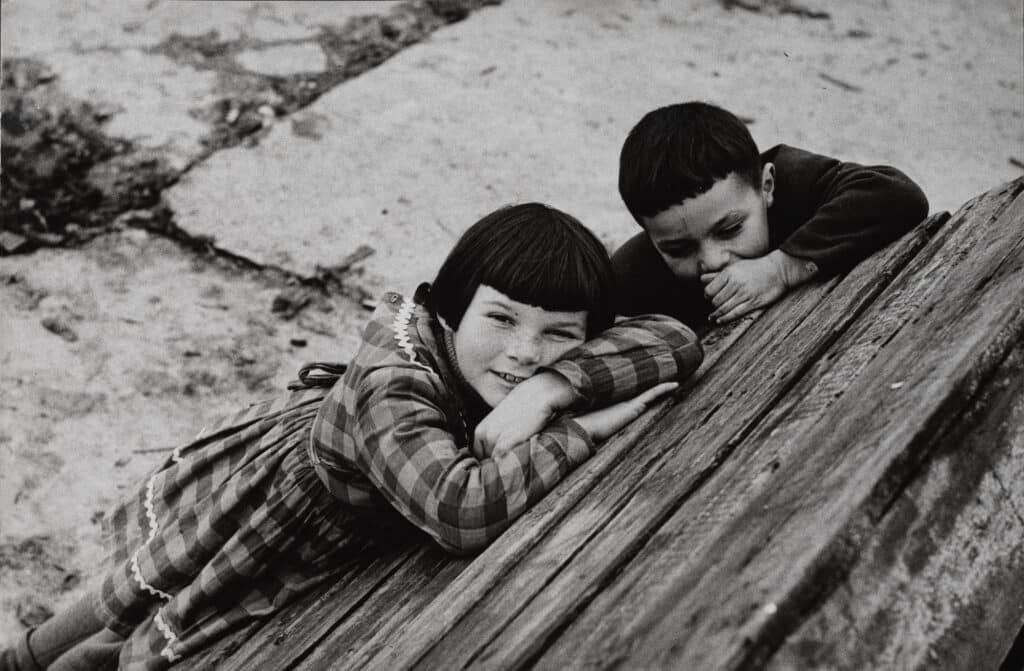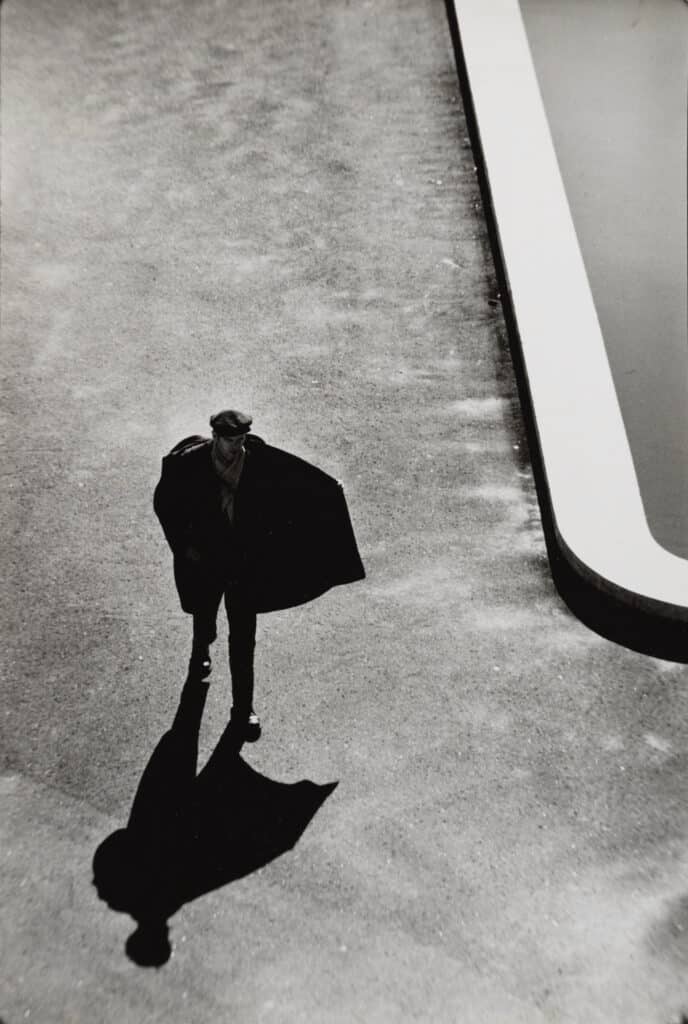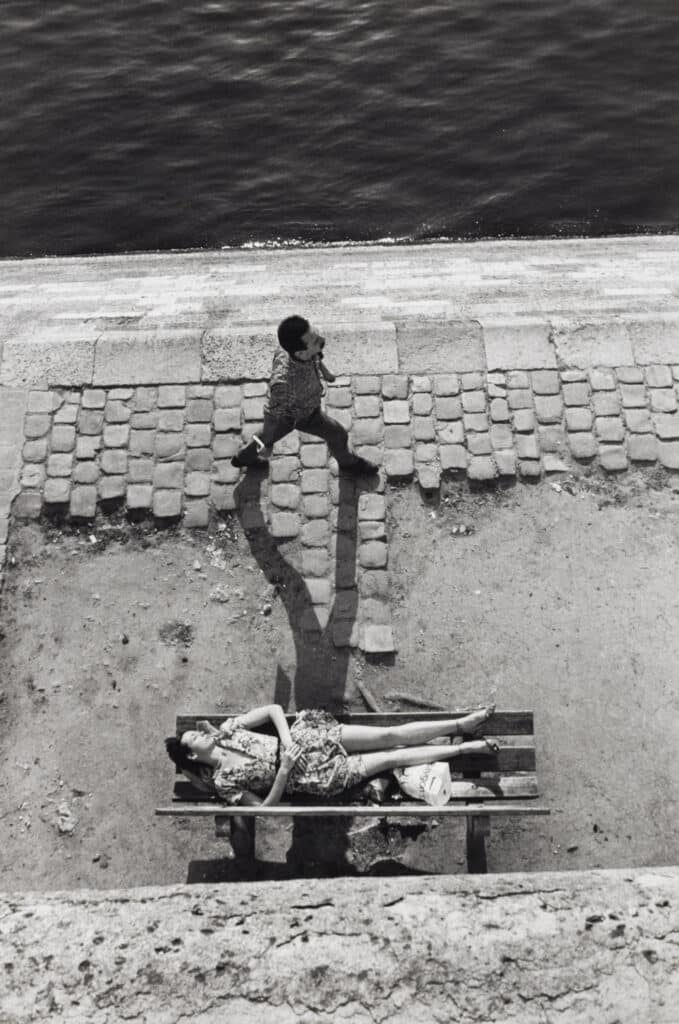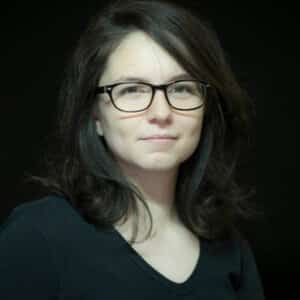Everything is black, except for the light cast by an oil lamp. A chiaroscuro worthy of the paintings of Georges de la Tour, bringing three childish faces into the circle of light. A physician, seen from behind, is pressing a boy’s tongue with a spoon to examine his throat. This country doctor is not the one immortalized in by W. Eugene Smith in Colorado, but a medical practitioner from the Department of Creuse, photographed by Jean-Philippe Charbonnier (1921–2004). This image is among forty prints showcased in the exhibition On the Edge, on view at Galerie Rouge until April 1.
The author of this photograph is one of the best kept secrets in humanist photography which helped define a swath of the 20th century. When he died in 2004, Charbonnier left behind a protean body of work, as reflected in the selection made by Agathe Cancellieri, the gallery director. The exhibition includes portraits, street photography, some fashion photographs, and numerous reportages.
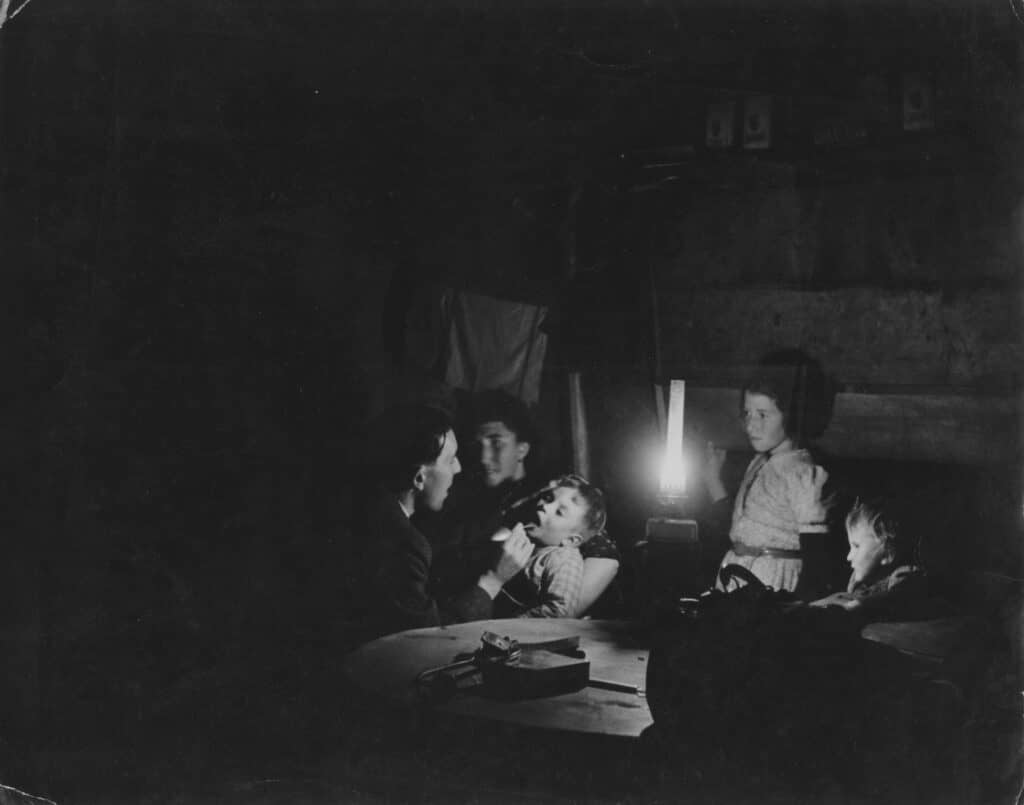
Photojournalist
For more than twenty years, between 1950 and 1974, Charbonnier worked for Réalités, a monthly magazine described in an exhibition devoted to the magazine at the Maison Européenne de la Photographie in 2008 as “one of the most innovative and influential titles of the 1950s and 1960s.” Édouard Boubat was another regular photographer for the magazine, which also welcomed in its pages the work Cartier-Bresson, Weiss, Horvat, Klein, to name a few. Charbonnier made long trips for the magazine, bringing back images from Mongolia, Alaska, China, Japan, the USSR and the Sahara, and of course France.
It is these latter images, taken in France, that are featured in the exhibition. We see the coal dust-covered faces of miners in the North alongside young women in bright undergarments, most likely in the dressing rooms at the Folies Bergères, getting ready to go on stage. There are also the inhabitants of Île de Sein, off Finistère; there is Parisian youth on the evening of July 14, 1945.
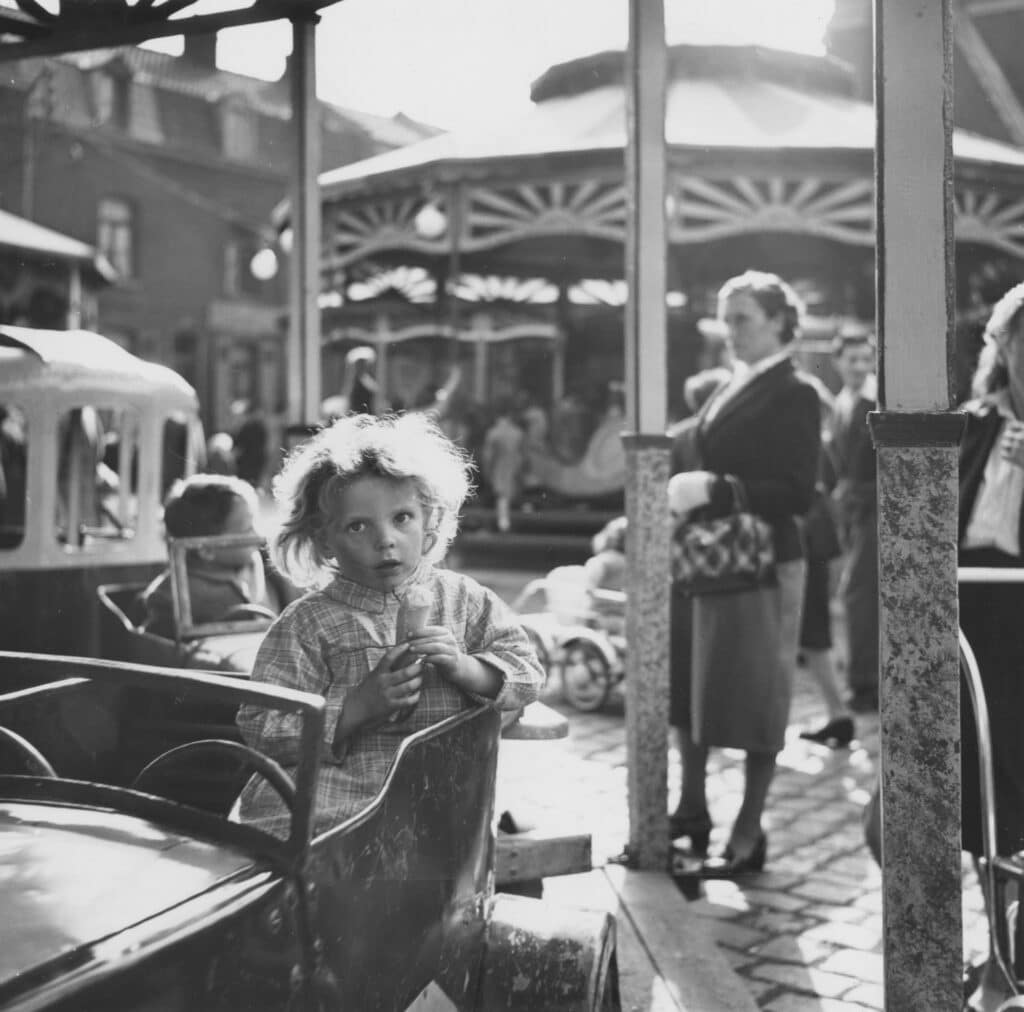
The most recent photos date from the late 1970s; these are no longer commissions: Charbonnier had already put down his hat of a Réalités photojournalist. We can imagine his wanderings around the streets of the French capital until a passerby or a situation catches his eye: a man dressed from head to toe in houndstooth; a woman asleep on a public bench drawn into a play of light and shadow… The images evince a sense of humor, and even gentle mockery, reminiscent of Martin Parr, except in black and white.
“A new, more caustic view of social reality ”
“Although he has much in common with the so-called ‘humanist photographers,’” writes the photography historian Gilles Mora, “he avoids their shortcomings, no doubt thanks to a less conciliatory, more abrupt nature and to a more lucid, darker outlook, devoid of the confounding naïveté of some of his peers. [Charbonnier’s] social commitment, his caustic humor, his distance toward the subject built a bridge between the photographer and the post-May 1968 generation of French reporters keen on getting a new, more caustic view of social reality.”
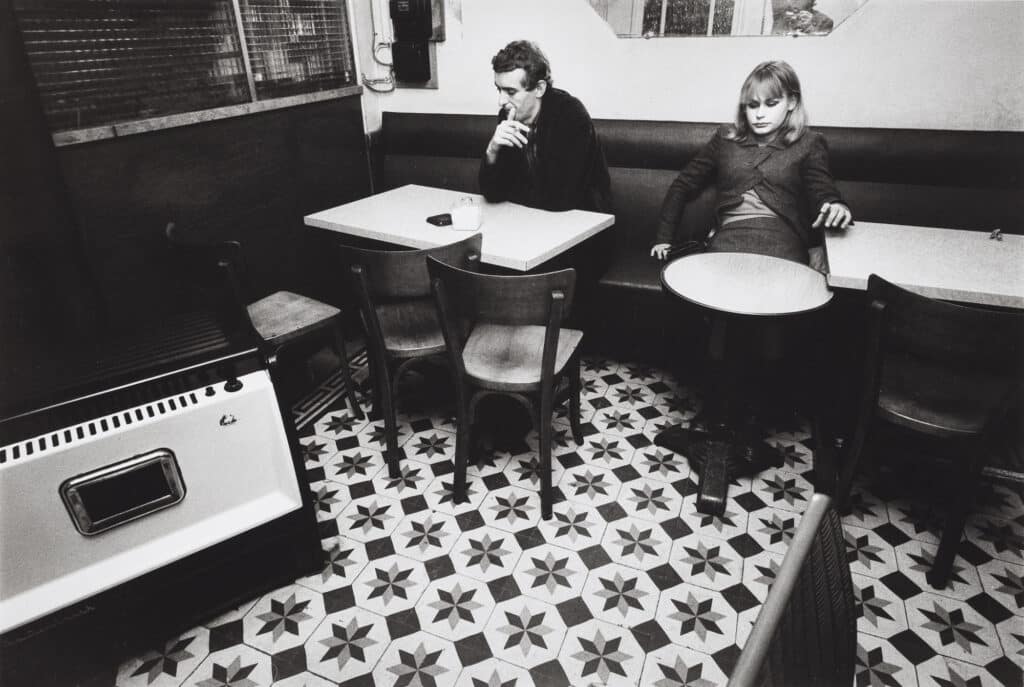
Mora called Charbonnier an “outsider.” This harsher approach, which sets Charbonnier apart from other humanist photographers, can be seen in his images of a psychiatric hospital made in the mid-1950s or in the contact sheet documenting the execution of a collaborator after the Liberation. These two news stories left a lasting impression on the photographer; some representative images are included in the exhibition.
Galerie Rouge reasserts its connection with the photographer: Charbonnier had encouraged, in the mid-1970s, the creation of what was then the Agathe Gaillard Gallery, the first venue entirely devoted to the photographic medium.
On the Edge, Galerie Rouge, 3, rue du Pont Louis-Philippe, Paris 3rd Arrondissement.
